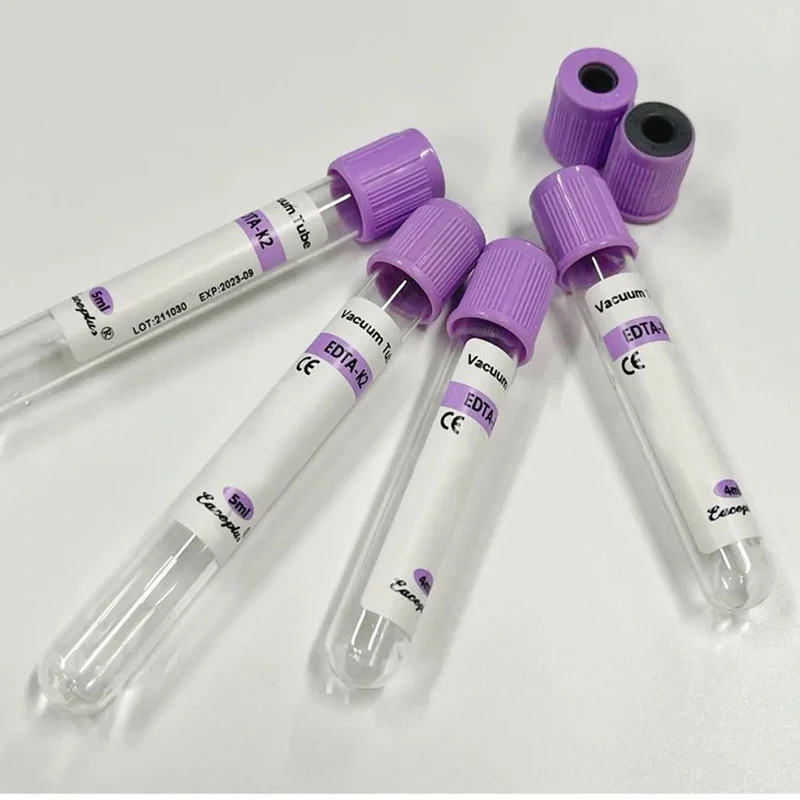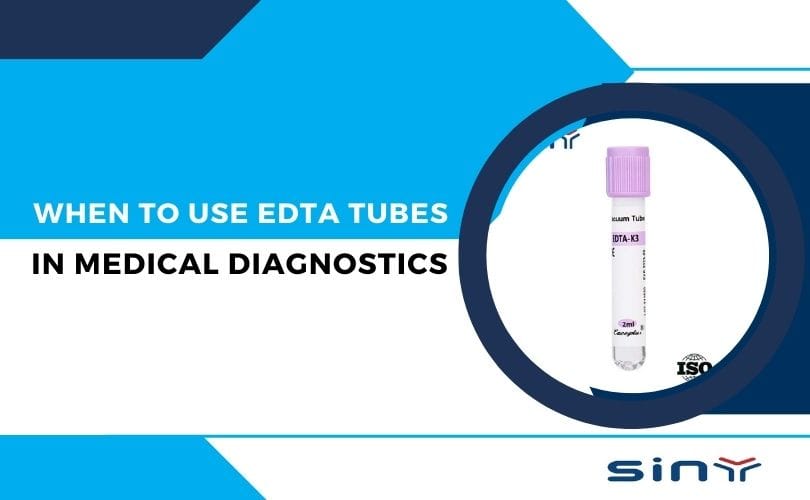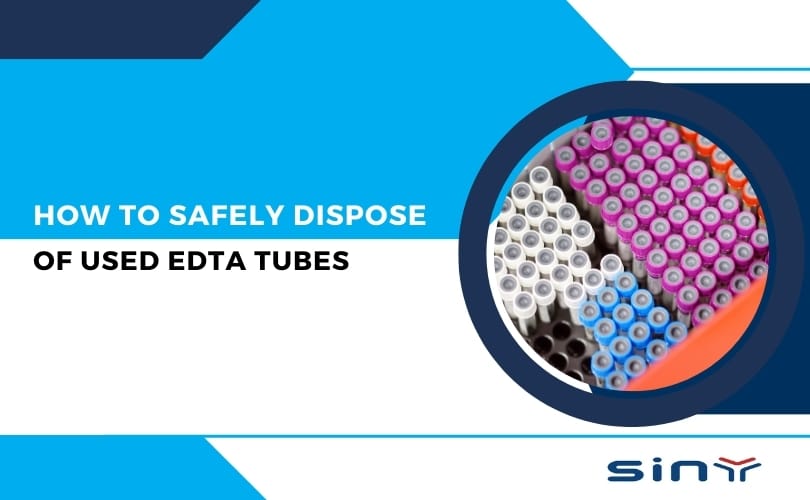EDTA Tubes are indispensable in modern medical diagnostics, particularly in hematology and certain molecular testing. They’re not just another tool in the lab—they’re essential for preserving the integrity of blood samples, ensuring reliable and accurate results. But how do these tubes work, and when should they be used?
In this blog, we’ll explore everything you need to know about EDTA Tubes, from their applications in diagnostics to their unmatched role in safeguarding sample quality. Whether you’re a medical professional, student, or lab technician, this guide is tailored to keep you informed.
What Are EDTA Tubes?
Before diving into their uses, it’s essential to understand what EDTA Tubes are.
EDTA Tubes are specialized blood collection tubes containing an anticoagulant called Ethylenediaminetetraacetic Acid (EDTA). This anticoagulant binds calcium in the blood, preventing clotting and preserving the sample for further analysis. These tubes are color-coded—usually lavender or purple—for easy identification in labs.
For a detailed explanation, check out What Is a EDTA Tube?
How EDTA Tubes Work in Diagnostics
The anticoagulant properties of EDTA make it a top choice for blood sample preservation. By binding calcium ions, EDTA ensures that blood remains in its liquid form, preventing clot formation and enabling accurate diagnostic testing.

- Sample Integrity: EDTA preserves cellular morphology, making it ideal for hematological studies.
- Compatibility: Its versatility allows compatibility with a wide range of analyzers used in modern diagnostics.
For in-depth insights, explore the Applications of EDTA Tubes in Medical Laboratories.
When Should You Use EDTA Tubes?
Here’s a closer look at scenarios where EDTA Tubes are critical:
1. Hematology Testing
Hematological tests analyze the cellular components of blood, such as red blood cells (RBCs), white blood cells (WBCs), and platelets. EDTA preserves the natural state of these cells, ensuring precise results.
- Complete Blood Count (CBC): The most common test in hematology relies on EDTA tubes to analyze blood components.
- Blood Smears: For evaluating cell morphology, EDTA prevents degradation.
2. Molecular Diagnostics
In DNA or RNA testing, EDTA is preferred as it prevents nuclease activity that could degrade genetic material.
3. Blood Typing and Cross-Matching
For safe blood transfusions, EDTA tubes are used to ensure accurate blood group typing and compatibility testing.
4. Parasitology
When diagnosing parasitic infections such as malaria, EDTA ensures the accurate detection of parasites within blood samples.
Why EDTA Tubes Are Preferred Over Other Tubes
The choice of a collection tube significantly impacts the quality of test results. Compared to other tubes, EDTA Tubes offer unique advantages:
- No Platelet Clumping: EDTA prevents clumping, which can interfere with accurate platelet counts.
- Minimal Hemolysis: Samples collected in EDTA tubes are less prone to red blood cell lysis.
- Wider Application Range: Suitable for both manual microscopy and advanced automated systems.
Learn more about the Top 5 Benefits of Using EDTA Tubes.
Benefits of Using EDTA Tubes in Medical Diagnostics
- Enhanced Sample Preservation
With its ability to bind calcium, EDTA keeps blood samples in their original form, reducing the chances of degradation. - Accurate Hematological Results
Since EDTA doesn’t alter cellular morphology, it provides the most reliable results for blood component analysis. - Versatility Across Diagnostic Tests
Whether it’s genetic testing or routine blood work, EDTA tubes are a universal choice. - Time-Saving
The anticoagulant action of EDTA begins instantly, making it highly efficient for labs processing high volumes of samples.
How to Properly Handle EDTA Tubes
Proper usage of EDTA Tubes is key to reliable results:
- Mix Gently: After collection, invert the tube 8-10 times to mix the anticoagulant with blood.
- Avoid Freezing: EDTA-preserved samples should never be frozen, as it can cause cell rupture.
- Use Appropriate Volume: Maintain the correct blood-to-anticoagulant ratio for accurate outcomes.
For more tips, check out this detailed EDTA Tube Handling Guide.
Why EDTA Tubes Are a Lab Essential
From routine blood tests to complex genetic studies, EDTA Tubes have revolutionized diagnostics. Their ability to preserve sample integrity while providing consistent results makes them a staple in laboratories worldwide.
Visit Siny Medical for high-quality EDTA tubes and explore their applications.
EDTA Tubes play a crucial role in the world of medical diagnostics, providing unmatched reliability and accuracy. Their ability to preserve blood samples makes them essential for various tests, from routine hematology to advanced molecular diagnostics. Understanding when and how to use these tubes can ensure better results and streamline laboratory processes.
For premium-quality EDTA tubes, visit EDTA Tube today. Don’t forget to explore their extensive catalog of EDTA Tubes to find the right option for your needs.
FAQ EDTA Tubes
What is the main function of EDTA in blood collection tubes?
EDTA acts as an anticoagulant by binding calcium ions, preventing blood from clotting and preserving its cellular components.
Are EDTA Tubes suitable for coagulation tests?
No, EDTA interferes with coagulation factors. Use citrate tubes for coagulation studies like PT or APTT.
How long can blood samples in EDTA Tubes be stored?
Ideally, samples should be processed within 24 hours to ensure the accuracy of results. Prolonged storage can cause cellular changes.
Why are EDTA Tubes purple?
The lavender or purple color is a standard coding system in laboratories, making it easy to identify EDTA tubes at a glance.
Can EDTA Tubes be used for DNA extraction?
Yes, EDTA is excellent for preserving DNA as it inhibits nucleases that could degrade the sample.






